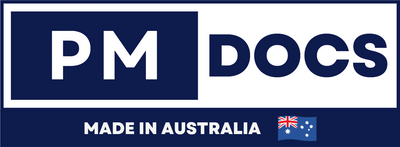ISO 13485 Certification In Australia: Medical Device Requirements
ISO 13485 Certification In Australia: Navigating Medical Device Requirements
The medical device industry is a tightly regulated landscape, and for good reason. The quality, safety, and efficacy of these products directly impact human health and well-being. In Australia, the Therapeutic Goods Administration (TGA) spearheads the regulatory framework, ensuring that only high-quality, safe, and effective medical devices reach patients. A cornerstone of demonstrating this commitment to quality, particularly for manufacturers, is ISO 13485 certification.

If you're a medical device manufacturer, whether based in Australia or looking to enter the Australian market, understanding the intricacies of ISO 13485 and its relationship with TGA requirements is not just beneficial – it's often essential. This comprehensive guide will delve into what ISO 13485 entails, its significance within the Australian context, key requirements, the certification process, and the undeniable benefits it offers.
What Is ISO 13485? The Global Standard For Medical Device Quality
ISO 13485:2016, titled "Medical devices – Quality management systems – Requirements for regulatory purposes," is an internationally recognized standard that sets out the requirements for a comprehensive quality management system (QMS) specific to the medical device industry. Unlike its more general counterpart, ISO 9001, ISO 13485 is tailored to address the unique regulatory demands and challenges of designing, developing, manufacturing, installing, and servicing medical devices. It also applies to organizations providing related services.
The core objective of ISO 13485 is to ensure that medical devices and related services consistently meet customer requirements and applicable regulatory requirements. Its principles are deeply rooted in:
-
Risk management: Throughout the entire product lifecycle.
-
Process approach: Focusing on efficiency and effectiveness.
-
Regulatory compliance: Explicitly integrating regulatory requirements into the QMS.
- Customer focus: Prioritizing safety and performance for end-users.
It's crucial to understand that ISO 13485 is a process standard, not a product standard. It doesn't certify the device itself, but rather the quality management system under which the device is produced. This provides a robust framework for manufacturers to consistently demonstrate their ability to produce safe and effective products.
The Australian Regulatory Landscape: TGA And The Role Of ISO 13485
In Australia, the Therapeutic Goods Administration (TGA) is the national regulatory body responsible for regulating all therapeutic goods, including medical devices. The TGA's role is to safeguard public health by ensuring that therapeutic goods available in Australia are of an acceptable quality, safety, and efficacy (performance).
For medical device manufacturers, demonstrating compliance with TGA regulations is paramount for market access. The TGA's regulatory framework for medical devices is outlined in the Therapeutic Goods (Medical Devices) Regulations 2002. A critical component of these regulations is the requirement for manufacturers to implement and maintain a robust quality management system. This is precisely where ISO 13485 comes into play.
The TGA explicitly leverages ISO 13485 as a primary means for manufacturers to demonstrate compliance with the conformity assessment procedures, which are essential for listing medical devices on the Australian Register of Therapeutic Goods (ARTG). For many device classifications, particularly higher-risk devices, an ISO 13485 certificate from a reputable, TGA-recognised Conformity Assessment Body (CAB) or Notified Body (for overseas manufacturers) is a de facto requirement.
How TGA Utilises ISO 13485:
-
Evidence of QMS: The TGA accepts ISO 13485 certification as compelling evidence that a manufacturer has an appropriate quality management system in place, meeting the essential principles for safety and performance of medical devices.
-
Conformity Assessment: For most medical devices, manufacturers must undergo a conformity assessment procedure to demonstrate that their devices meet the essential principles. ISO 13485 certification often forms the basis or a significant part of this assessment.
- Streamlined Market Access: For both Australian and international manufacturers, having a TGA-accepted ISO 13485 certificate significantly streamlines the process of getting devices listed on the ARTG, facilitating market entry.
Key Requirements Of ISO 13485
ISO 13485 is structured into eight clauses, with clauses 4 through 8 detailing the actual requirements for the QMS. These clauses mirror the structure of ISO 9001 but include specific, additional requirements pertinent to medical devices and their regulatory environment.
Here are the critical areas addressed by ISO 13485, which an organization must meticulously implement:
-
Quality Management System (Clause 4):
- General requirements for documentation, quality manual, control of documents, and control of records.
- Specific requirements for medical device files and unique device identification (UDI) system where applicable.
- General requirements for documentation, quality manual, control of documents, and control of records.
-
Management Responsibility (Clause 5):
- Top management's commitment, quality policy and objectives, management review, and communication.
- Defines the organizational structure and responsibilities for product safety and regulatory compliance.
- Top management's commitment, quality policy and objectives, management review, and communication.
-
Resource Management (Clause 6):
- Provision of adequate resources (personnel, infrastructure, work environment).
- Emphasis on personnel competence, training, and awareness specific to medical device manufacturing.
- Provision of adequate resources (personnel, infrastructure, work environment).
-
Product Realization (Clause 7): This is a critical and extensive clause covering the entire product lifecycle:
-
Planning of Product Realization: From design to delivery.
-
Customer-Related Processes: Determining and reviewing requirements.
-
Design and Development: Planning, inputs, outputs, review, verification, validation, transfer, change control, and design and development files. This is highly detailed for medical devices.
-
Purchasing: Control of external providers, purchasing information, and verification of purchased product.
-
Production and Service Provision: Control of production, cleanliness of product, installation, servicing, and specific requirements for sterile medical devices and traceability.
-
Control of Monitoring and Measuring Equipment: Calibration and maintenance to ensure valid results.
-
Planning of Product Realization: From design to delivery.
-
Measurement, Analysis, and Improvement (Clause 8):
-
Feedback: Including complaint handling and reporting to regulatory authorities.
-
Internal Audit: Regular assessments of the QMS effectiveness.
-
Control of Nonconforming Product: Identification, control, and disposition.
-
Data Analysis: Using data to identify trends and potential issues (e.g., post-market surveillance).
- Improvement: Corrective actions, preventive actions, and continual improvement of the QMS.
-
Feedback: Including complaint handling and reporting to regulatory authorities.
The Certification Process In Australia
Achieving ISO 13485 certification in Australia involves a structured approach, typically guided by an independent, accredited certification body (CB) recognised by the TGA and accredited by Joint Accreditation System of Australia and New Zealand (JAS-ANZ). The general process includes:
-
Preparation & Gap Analysis:
- Familiarisation with ISO 13485 requirements.
- Conduct a gap analysis to identify areas where existing QMS falls short.
- Familiarisation with ISO 13485 requirements.
-
QMS Design & Implementation:
- Develop and document required procedures, policies, work instructions, and records to meet ISO 13485.
- Implement the QMS throughout the organisation, ensuring all personnel are trained and compliant.
- Develop and document required procedures, policies, work instructions, and records to meet ISO 13485.
-
Internal Audits:
- Conduct internal audits to verify the QMS is effectively implemented and maintained.
- Conduct internal audits to verify the QMS is effectively implemented and maintained.
-
Management Review:
- Top management reviews the QMS's performance, suitability, and effectiveness.
- Top management reviews the QMS's performance, suitability, and effectiveness.
-
Certification Body Selection:
- Choose an accredited certification body (e.g., those accredited by JAS-ANZ and recognised by TGA).
- Choose an accredited certification body (e.g., those accredited by JAS-ANZ and recognised by TGA).
-
Stage 1 Audit (Documentation Review):
- The CB reviews your documented QMS to assess its readiness against ISO 13485 requirements.
- The CB reviews your documented QMS to assess its readiness against ISO 13485 requirements.
-
Stage 2 Audit (On-Site Audit):
- The CB conducts an on-site audit to evaluate the implementation and effectiveness of your QMS in practice. They will review records, interview staff, and observe processes.
- The CB conducts an on-site audit to evaluate the implementation and effectiveness of your QMS in practice. They will review records, interview staff, and observe processes.
-
Certification Decision:
- If the QMS is found to be compliant and effective, the CB issues the ISO 13485 certificate.
- If the QMS is found to be compliant and effective, the CB issues the ISO 13485 certificate.
-
Surveillance Audits:
- Annual surveillance audits are conducted by the CB to ensure ongoing compliance.
- Annual surveillance audits are conducted by the CB to ensure ongoing compliance.
-
Re-certification Audit:
- Typically every three years, a re-certification audit is performed to renew the certificate.
This process can take anywhere from several months to over a year, depending on the organization's size, complexity, and existing QMS maturity.
Benefits Of ISO 13485 Certification In Australia
The investment in achieving ISO 13485 certification yields significant returns for medical device manufacturers operating in or targeting the Australian market.
Here's a breakdown of the key benefits:
| Benefit Category | Description |
|---|---|
| Regulatory Compliance | Serves as a primary means to demonstrate compliance with TGA regulations, facilitating timely market access and reducing regulatory hurdles for listing devices on the ARTG. |
| Enhanced Reputation | Signals a strong commitment to quality, product safety, and patient well-being, enhancing credibility with customers, regulators, and partners both within Australia and globally. |
| Improved Efficiency | Streamlines internal processes, reduces waste, identifies non-conformances early, and fosters a culture of continuous improvement, leading to more efficient operations and reduced costs over time. |
| Global Market Access | ISO 13485 is internationally recognised and often accepted by other major regulatory bodies (e.g., EU MDD/MDR, Health Canada, Japan MHLW, USA FDA QSR-light). It acts as a passport to numerous global markets. |
| Robust Risk Management | Enforces a systematic approach to identifying, evaluating, controlling, and monitoring risks throughout the entire product lifecycle, significantly enhancing product safety and reliability. |
| Increased Patient Safety | By establishing rigorous controls over design, manufacturing, and post-market activities, the likelihood of producing faulty or unsafe devices is substantially reduced, directly contributing to patient safety. |
| Customer Confidence | Provides assurance to healthcare providers and patients that the medical devices they use have been manufactured under stringent quality controls, fostering trust and loyalty. |
Common Challenges And How To Overcome Them
Embarking on the ISO 13485 journey can present challenges, particularly for organisations new to formal quality management systems:
-
Complexity of Requirements: The standard is detailed and comprehensive.
-
Resource Allocation: Requires significant investment in time, personnel, and finances.
-
Documentation Burden: The need for extensive documentation can be overwhelming.
-
Cultural Change: Shifting from informal practices to a disciplined QMS.
- Understanding Regulatory Nuances: Interpreting ISO 13485 in the context of specific TGA requirements.
To overcome these challenges:
- Secure top management commitment from the outset.
- Develop a clear project plan with realistic timelines and allocate sufficient resources.
- Consider engaging experienced consultants with expertise in both ISO 13485 and TGA regulations.
- Invest in comprehensive training for all relevant personnel.
- Embrace a phased implementation approach, focusing on one area at a time.
Conclusion
For medical device manufacturers, ISO 13485 certification is more than just a certificate on the wall; it's a fundamental commitment to quality, safety, and regulatory compliance. In Australia, its alignment with TGA requirements makes it an indispensable tool for market access and continued operation. By investing in a robust ISO 13485-compliant Quality Management System, manufacturers not only navigate the complexities of the Australian regulatory landscape but also build a foundation for operational excellence, global competitiveness, and ultimately, enhanced patient safety. Embrace the standard, secure your certification, and contribute to a healthier world with confidence and integrity.




